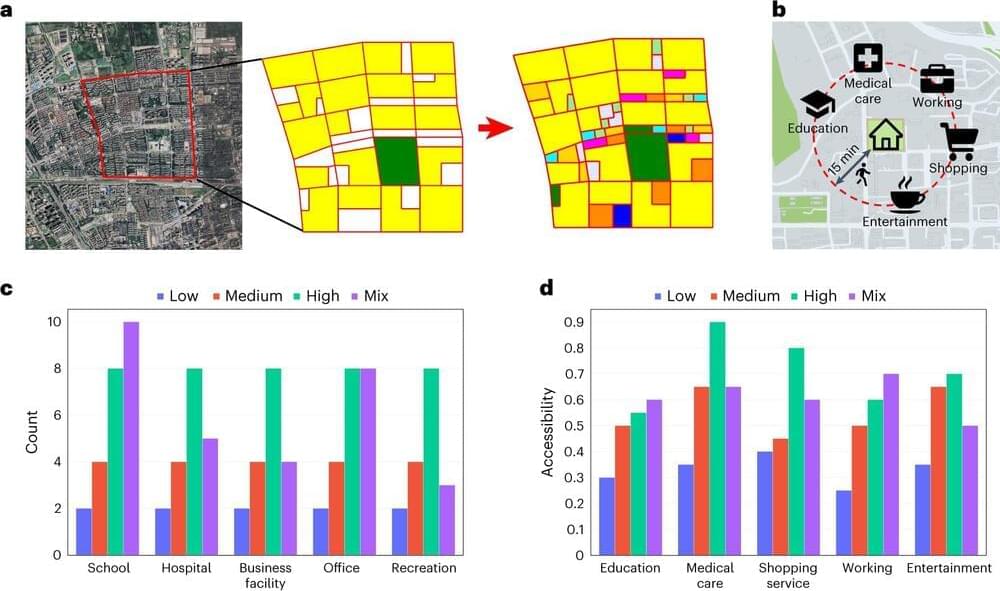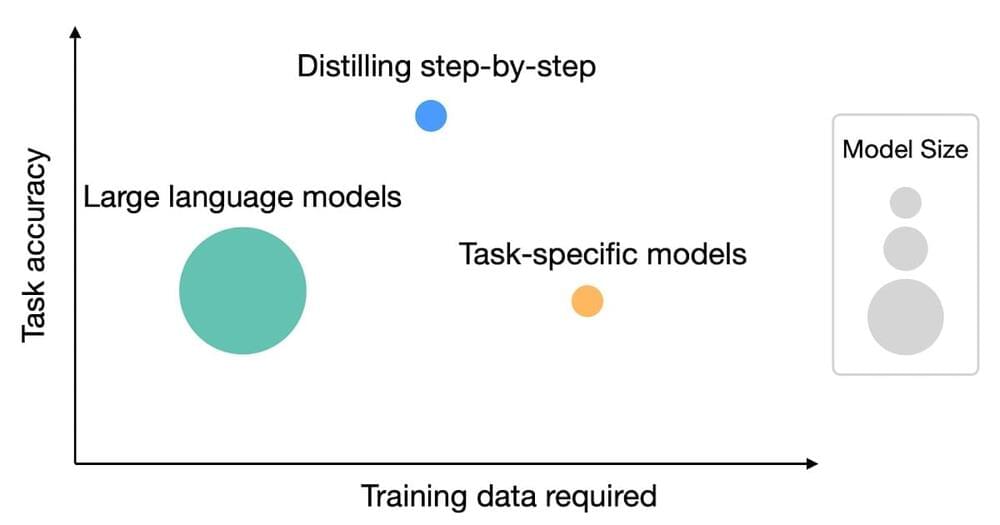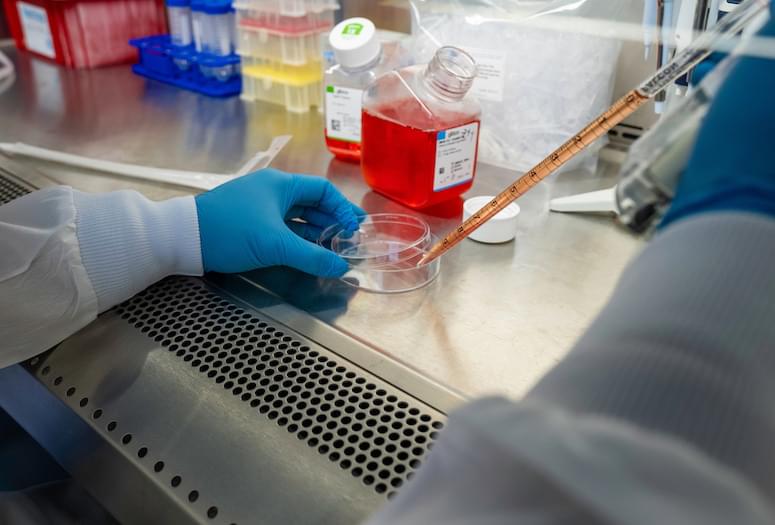CNBC’s Tania Bryer heads to CogX to talk to Ian Bremmer. The president of Eurasia Group reveals he believes AI will be transformative for the geopolitical order in both good and problematic ways.



A team of urban planners and information scientists at Tsinghua University in China has found that an AI-based urban planning system was able to outperform human experts in creating urban planning designs. In their study, reported in the journal Nature Computational Science, the group describes the factors that were used in describing the ideal urban plan and how well their AI did when tested. Paolo Santi, with the MIT Senseable City Lab, has published a News & Views piece in the same journal issue outlining the work done by the team on this new effort.
For much of history, cities have been left to grow organically—immediate needs were determined and urban planners and engineers attempted to fulfill those needs. In many cases, such a haphazard approach to urban growth has led to less-then-optimal results. In more recent times, city officials and other planners have attempted to take a more logical approach to the problem by creating designs for areas to be developed that account for things like livability and pollution controls.
This has led to the development of urban planning as a science and the advent of professional urban development experts. This science can be extremely complicated due to the increasing number of variables that must be accounted for as the size of a new development increases. In this new effort, the research team found a way to apply AI to the problem to ease the burden.

Large language models (LLMs) have enabled a new data-efficient learning paradigm wherein they can be used to solve unseen new tasks via zero-shot or few-shot prompting. However, LLMs are challenging to deploy for real-world applications due to their sheer size. For instance, serving a single 175 billion LLM requires at least 350GB of GPU memory using specialized infrastructure, not to mention that today’s state-of-the-art LLMs are composed of over 500 billion parameters. Such computational requirements are inaccessible for many research teams, especially for applications that require low latency performance.
To circumvent these deployment challenges, practitioners often choose to deploy smaller specialized models instead. These smaller models are trained using one of two common paradigms: fine-tuning or distillation. Fine-tuning updates a pre-trained smaller model (e.g., BERT or T5) using downstream manually-annotated data. Distillation trains the same smaller models with labels generated by a larger LLM. Unfortunately, to achieve comparable performance to LLMs, fine-tuning methods require human-generated labels, which are expensive and tedious to obtain, while distillation requires large amounts of unlabeled data, which can also be hard to collect.
In “Distilling Step-by-Step! Outperforming Larger Language Models with Less Training Data and Smaller Model Sizes”, presented at ACL2023, we set out to tackle this trade-off between model size and training data collection cost. We introduce distilling step-by-step, a new simple mechanism that allows us to train smaller task-specific models with much less training data than required by standard fine-tuning or distillation approaches that outperform few-shot prompted LLMs’ performance. We demonstrate that the distilling step-by-step mechanism enables a 770M parameter T5 model to outperform the few-shot prompted 540B PaLM model using only 80% of examples in a benchmark dataset, which demonstrates a more than 700x model size reduction with much less training data required by standard approaches.

HONG KONG, Sept 22 (Reuters) — China’s craze over generative artificial intelligence has triggered a flurry of product announcements from startups and tech giants on an almost daily basis, but investors are warning a shakeout is imminent as cost and profit pressures grow.
The buzz in China, first ignited by the success of OpenAI’s ChatGPT almost a year ago, has given rise to what a senior Tencent (0700.HK) executive described this month as “war of a hundred models”, as it and rivals from Baidu (9888.HK) to Alibaba (9988.HK) to Huawei promote their offerings.
China now has at least 130 large language models (LLMs), accounting for 40% of the global total and just behind the United States’ 50% share, according to brokerage CLSA. Additionally, companies have also announced dozens of “industry-specific LLMs” that link to their core model.
HARNHAM, United Kingdom — The mysteries of Stonehenge may be the tip of the archaeological iceberg in this region of the United Kingdom. Researchers have made another remarkable discovery just miles from the world-famous site.
While preparing for a new housing development in Harnham, just eight miles south of Stonehenge, workers unearthed items that may date all the way back to 10,000 BC. The findings include ancient pottery, knives, and even red deer antler, which was often used for making tools and weapons in prehistoric times, according to archaeologists.
Cotswold Archaeology partnered with Vistry Group, the property developers, on this excavation project.
🔔 Subscribe for more Artificial Intelligence news, Robot news, Tech news and more.
🦾 Support us NOW so we can create more videos: https://www.youtube.com/channel/UCItylrp-EOkBwsUT7c_Xkxg.
TEKST 📺 Fun fact: Smart people watch the entire video!
Watch More from Artificial Intelligence News Daily.
🔵 Japan Human Robot News: https://youtube.com/playlist?list=PLi7ozibUCGOubIUsFnw2zatGiNH0MH2FV
🟢 Boston Dynamic News: https://youtube.com/playlist?list=PLi7ozibUCGOvQegVXq-ArQSyDcwXqQqls.
🟠 Robot news: https://youtube.com/playlist?list=PLi7ozibUCGOvWDRGAdGxOZx40pjk82hhd.
🔴 Artificial Intelligence News: https://youtube.com/playlist?list=PLi7ozibUCGOuaUErL6-zIj5_R2E7q_cf4🤖 AI News Daily provides the latest Artificial Intelligence news and trends. Explore industry research and reports from the frontline of AI technology news.🕵️ We take the best research and put our own spin on it, report from the frontline of the industry, as well as feature contributions from companies at the heart of this revolution.
💼 Contact & Copyright Questions.
• For copyright cases, business inquiries or other inquiries please contact us at: [email protected]
A depiction of a robot with human neurons.

To make a gene-editing tool more precise and easier to control, Rice University engineers split it into two pieces that only come back together when a third small molecule is added.
Researchers in the lab of chemical and biomolecular engineer Xue Sherry Gao created a CRISPR-based gene editor designed to target adenine ⎯ one of the four main DNA building blocks ⎯ that remains inactive when disassembled but kicks into gear once the binding molecule is added.
Compared to the intact original, the split editor is more precise and stays active for a narrower window of time, which is important for avoiding off-target edits. Moreover, the activating small molecule used to bind the two pieces of the tool together is already being used as an anticancer and immunosuppressive drug.

I wondered when this would happen. Reminds me of the video game “The Last of Us” and there’s a TV series as well. I’m sure they’ll stop it though.
Silver leaf disease is a curse for a variety of botanicals, from pears to roses to rhododendron. Infecting their leaves and branches, the fungus Chondrostereum purpureum can be fatal for the plant if not quickly treated.
Aside from the risk of losing the occasional rose bush, the fungal disease has never been considered a problem for humans. Until this year.
In what researchers suggest is the first reported case of its kind, a 61-year-old Indian mycologist appears to have contracted a rather serious case of silver leaf disease in his own throat, providing a rare example of a pathogen seemingly making an enormous leap across entire kingdoms in the tree of life.